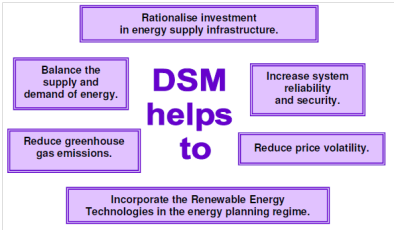Dsm In Power System
Initially, DSM was driven through electricity businesses as a load and investment management tool, frequent within a least-cost planning framework. Although this aspect continues even present in some countries, DSM is increasingly being used through power utilities worldwide as a potent tool for energy management (see Figure).

Figure: DSM as a Tool for Energy Management for Power Utilities
Here you will learn about the techniques being adopted through utilities to use DSM for meeting these aims.
Demand side management through a utility incorporates all activities which are designed to influence customer use of electricity in ways which are mutually beneficial to the customer and the utility. It assures efficient use of the electric system and gives a broader range of choices for customers.
At the core of a utility DSM programme is a series of measures intended to encourage specific groups of customers or market segments to modify their energy usage patterns. These should be implemented in a manner consistent along with the utility's DSM objectives, although maintaining or enhancing customer satisfaction. You must know that the demand-side planning and management procedure is dynamic. It is flexible, comprehensive, and must accommodate changing conditions.
Utility DSM programmes commonly fall into two broad categories:
- Demand/Load Management Programmes to shift and reschedule the energy consumption process; and
- Energy Conservation and Efficiency Programmes to save energy. We now elaborate the first of these categories of DSM programmes.